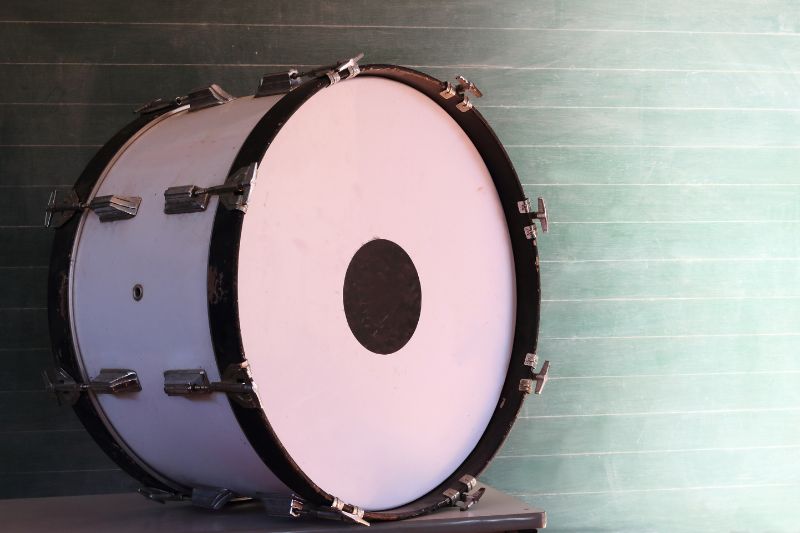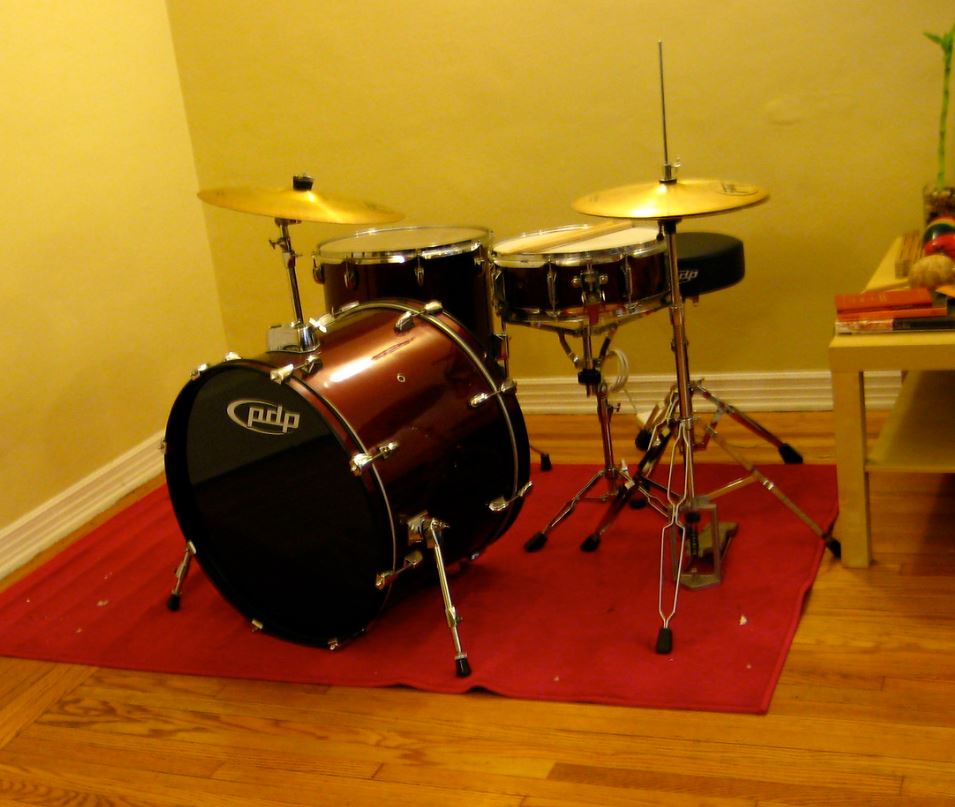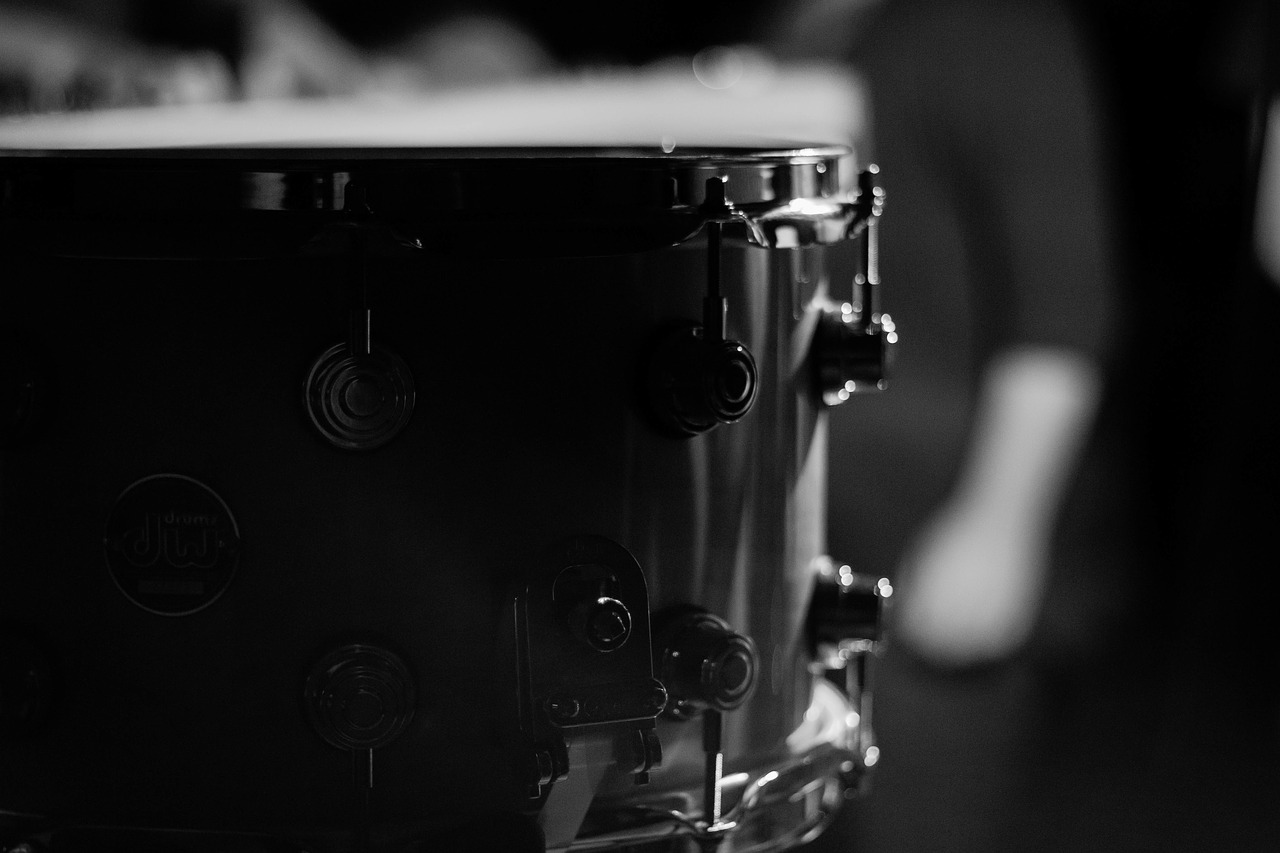Is Stacking Acoustic Drums Bad for The Heads?

Drumheads generally cannot take constant pressure, as they are designed to stretch and revert back to their position. That being said, a lot of people stack their drums for storage and haven’t had any issues with the drum heads, other than some of them going out of tune, which is to be expected.
For storing, and especially for transport, the best way to pack your acoustic drum set is to use drum bags and cases. But if you do not own any bags or cases and you want to store your drums when you’re not playing them, stacking them will take up less space but it’s not the most recommended option.
Other than the heads going out of tune sooner, the hoops on the drums usually leave a dent in the head they were on. If this is something that will bother you, I recommend that you don’t stack your drums, as those dents will irritate you every time you see them.
Contents
Pros and Cons of Stacking Acoustic Drums
You can see a lot of drum shops stack drums when they put them on display, and the reason is that this way, the drums can be seen without taking up a lot of space. So if storage space is an issue for you, then stacking your drums for storage is a big pro. Also, they look good, right?
One con that I can think of is that the heads go out of tune faster. Meaning if you plan to stack your drums and store them for a longer period, then you are fine because stacked or not, for long-term storage, the heads will go out of tune anyway. Stacking the drums for a week, or even two, might not be a great idea as you would have to tune them more often.
Also, the famous dent in the head might be a big con for some people. The drum that is sitting on top of the head will leave a mark on it that won’t go away. Avoid stacking your drums if you are easily bothered by things like this.
Pros and Cons of Using Drum Bags And Cases
Although it requires an up-front investment, drum bags and especially cases are the best way to store and transport your drums. Drum bags are lighter and easier to carry, while the hard cases are more durable and provide better protection for your drums. I recommend hard cases if you are traveling a lot with your drums or if you go on tour.
We all know how easily acoustic drums get dusty, especially if you are storing them and not playing them. One big pro for using bags and cases is that you avoid cleaning dust from all over your drum set when you don’t play them for a while.
And I have to talk about the only con of using drum bags and cases. And it’s an obvious one. Drum bags and cases are pricey, especially if you want some of the better ones. Fortunately, there are also some good budget-friendly options on the market.
Does Stacking Acoustic Drums Cause them to Detune?
Stacking acoustic drums will definitely detune them. This is because the pressure on top of the head will cause some stretching and eventually detune the drum. However, it’s important to know that if you’re stacking them for a few days, this will unlikely be the case. If you’ve stacked them for weeks or even months, then expect them to already be out of tune.
How to Properly Stack Acoustic Drums?
If you’re set on stacking your acoustic drums, know that no more than 4 drums should be stacked. The largest drum (the kick drum) should be at the bottom and the toms should be on top. This is a general rule of sorts, the largest drum on the bottom with the smallest drums on the top.
Note that you should stack the toms or snare with the resonant head facing upwards. This is done so that you don’t put pressure on the batter head (the side you’re striking). I also recommend you use plywood or some cardboard in between the drums so that it takes some of the pressure off.
Bonus tip – loosen the lugs on each drum to a finger-tight level so no unnecessary straining happens.
What are some Additional Tips for Storage?
Properly storing your drum set will increase the longevity of the drum heads and preserve your kit, in general. You want to store your kit in cases if possible, in a nice, normal-temperature room, without exposing them to direct sunlight. Humid rooms can also be detrimental to your drums and the overall wood so make sure you use a humidifier if that is the case. Naturally, clean your kit regularly and make sure to change the drum heads at least twice a year (depending on your consistency of playing).
Conclusion
If you are planning to store your drums for a shorter amount, then you are perfectly good to go with stacking them. Also, a great option if you don’t have bags or cases. If you have bags and cases or want to invest in some, it’s always recommended that you store your acoustic drums with beautiful finishes in them to avoid tuning issues, marks, dents, and dust.







